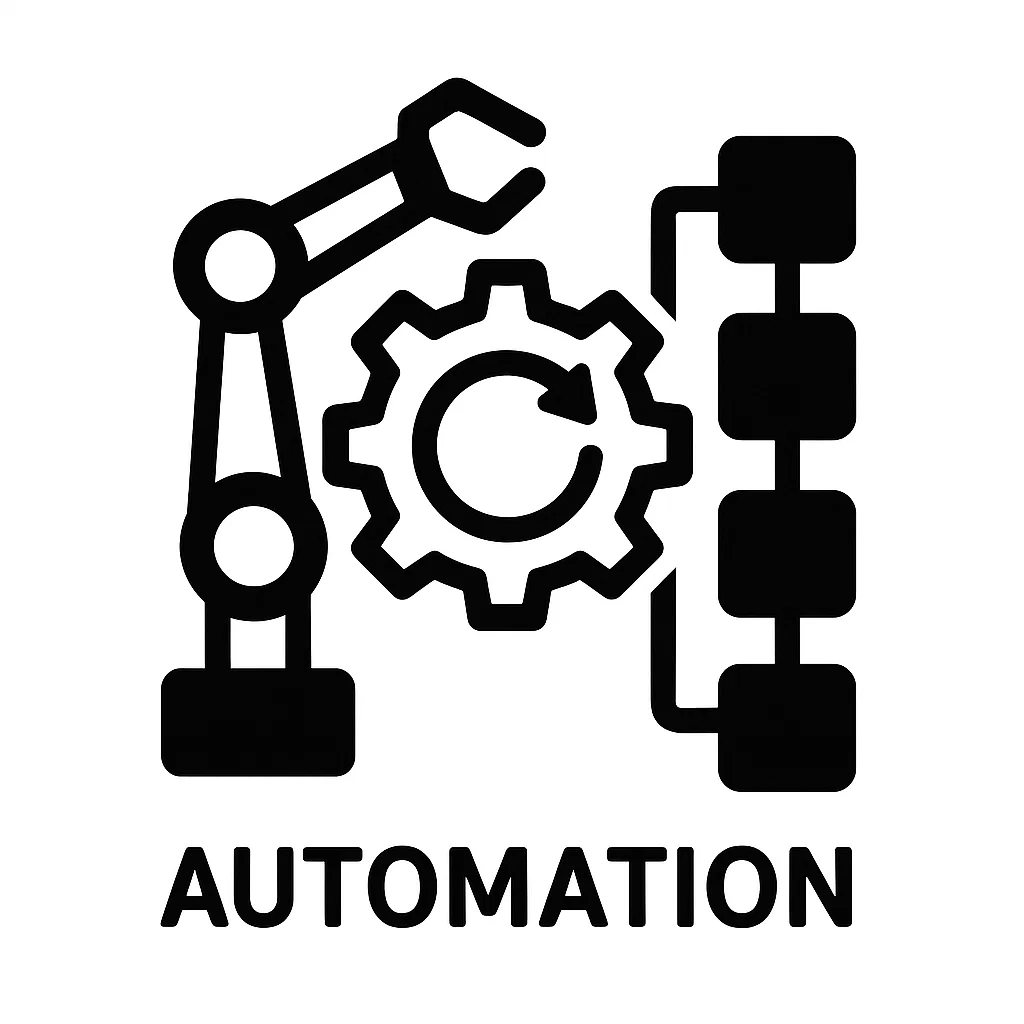200 Ways AI Can Revolutionize Your Business: The Essential Guide to Unlocking Success and Growth with Artificial Intelligence
Artificial Intelligence (AI) is no longer a futuristic concept—it is a present-day tool that can dramatically change how companies operate, compete, and grow. In this article, you will explore 200 actionable strategies where Artificial Intelligence reshapes business operations, boosts efficiency, and accelerates success.
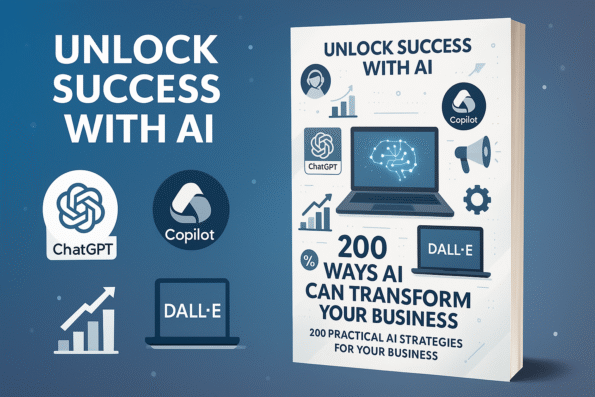
Introduction to AI in Business
The impact of AI in business is undeniable. From automating daily tasks to making smarter decisions, AI tools help companies cut costs, personalize experiences, and open new revenue streams. Understanding and implementing AI is no longer an option but a necessity for businesses aiming to stay competitive and thrive in the modern landscape. This guide delves into various facets of business where AI can be strategically applied to foster innovation, enhance productivity, and drive sustainable growth. We will cover a broad spectrum of applications, from optimizing customer interactions to streamlining complex operational workflows, ensuring that businesses of all sizes can find relevant and impactful strategies to adopt.
1. Customer Experience & Sales

In today’s competitive market, customer experience is paramount. AI offers unprecedented opportunities to personalize interactions, predict customer needs, and streamline sales processes, leading to increased satisfaction and revenue. By leveraging AI, businesses can move beyond generic approaches to deliver highly tailored and efficient customer journeys.
- 1. Personalized product recommendations: AI analyzes browsing history and purchase behavior to suggest relevant products, enhancing the shopping experience and increasing sales.
- 2. AI-powered chatbots: Provide instant customer support, answer FAQs, and guide users through processes 24/7, reducing response times and improving efficiency.
- 3. Predictive analytics for customer needs: Anticipate future customer demands and potential churn, allowing proactive engagement and retention strategies.
- 4. Sentiment analysis of customer feedback: Understand customer emotions and opinions from reviews, social media, and support interactions to improve service and product offerings.
- 5. Automated lead scoring and qualification: AI evaluates leads based on various criteria, prioritizing high-potential prospects for sales teams, optimizing their efforts.
- 6. Dynamic pricing optimization: Adjust product prices in real-time based on demand, competitor pricing, and market conditions to maximize revenue.
- 7. Virtual assistants for personalized shopping: Offer interactive, guided shopping experiences, helping customers find exactly what they need.
- 8. AI-driven content personalization: Tailor marketing messages, website content, and offers to individual customer preferences, increasing engagement and conversion rates.
- 9. Fraud detection in online transactions: AI algorithms identify suspicious patterns and anomalies to prevent fraudulent activities, protecting both the business and its customers.
- 10. Optimized call routing in contact centers: Direct customer calls to the most appropriate agent based on query type, customer history, and agent expertise, improving resolution rates.
- 11. AI-powered tools for sales forecasting: Predict future sales trends with higher accuracy by analyzing historical data, market indicators, and external factors.
- 12. Automated email responses: Generate quick and accurate replies to common customer inquiries, freeing up human agents for more complex issues.
- 13. Real-time translation for global customer support: Break down language barriers, enabling seamless communication with international customers.
- 14. Churn prevention: Identify customers at risk of leaving and implement targeted interventions to retain them, reducing customer acquisition costs.
- 15. Upselling and cross-selling opportunities: AI identifies optimal moments and products for upselling or cross-selling, increasing average order value.
- 16. Personalized loyalty programs: Design and manage loyalty programs that offer rewards and incentives tailored to individual customer behavior and preferences.
- 17. Voice commerce integration: Enable customers to make purchases and interact with services using voice commands, enhancing convenience.
- 18. AI-driven virtual try-on experiences: Allow customers to virtually try on clothing, accessories, or makeup, improving online shopping confidence and reducing returns.
- 19. Automated customer onboarding processes: Streamline the process of bringing new customers up to speed with products or services, improving initial satisfaction.
- 20. Enhanced customer segmentation: Create more precise customer segments based on detailed behavioral and demographic data, enabling highly targeted marketing and sales efforts.
2. Operations & Efficiency

Optimizing internal operations is crucial for cost reduction and increased productivity. AI provides powerful tools to automate repetitive tasks, predict maintenance needs, and streamline complex workflows, leading to significant gains in efficiency and resource utilization.
- 21. Predictive maintenance: AI analyzes sensor data from machinery and equipment to predict potential failures, enabling proactive maintenance and minimizing downtime.
- 22. Automated data entry and processing: AI-powered solutions extract and input data from documents, reducing manual effort, errors, and processing time.
- 23. AI-driven energy consumption optimization: AI systems monitor and adjust energy usage in facilities, leading to significant cost savings and reduced environmental impact.
- 24. Robotic Process Automation (RPA): Software robots automate repetitive, rule-based tasks across various business functions, improving speed and accuracy.
- 25. Smart inventory management: AI forecasts demand and optimizes inventory levels, reducing carrying costs, preventing stockouts, and improving supply chain responsiveness.
- 26. Optimized logistics and route planning: AI algorithms determine the most efficient delivery routes and logistics strategies, saving fuel and time.
- 27. Quality control and defect detection: AI-powered vision systems inspect products for defects in real-time, ensuring higher quality output and reducing waste.
- 28. Automated scheduling and resource allocation: AI optimizes employee schedules, equipment usage, and project timelines, maximizing productivity and minimizing conflicts.
- 29. AI-powered cybersecurity threat detection and response: AI identifies and responds to cyber threats faster than traditional methods, enhancing organizational security.
- 30. Workflow automation for administrative tasks: Automate routine administrative processes like approvals, document routing, and data synchronization, freeing up staff for strategic work.
- 31. Real-time performance monitoring: AI continuously monitors operational metrics, providing immediate insights into performance bottlenecks and areas for improvement.
- 32. Automated report generation: AI compiles data and generates comprehensive reports automatically, saving time and ensuring timely access to critical information.
- 33. AI-assisted decision-making for operational planning: AI provides data-driven recommendations for production planning, capacity management, and resource deployment.
- 34. Predictive analytics for supply chain disruptions: AI analyzes global events and historical data to foresee potential disruptions, allowing businesses to build more resilient supply chains.
- 35. Smart building management systems: AI controls building systems like HVAC, lighting, and security, optimizing comfort, safety, and energy efficiency.
- 36. Automated compliance checks and audits: AI reviews documents and processes against regulatory requirements, ensuring compliance and reducing audit preparation time.
- 37. AI-driven waste management and recycling optimization: AI identifies opportunities to reduce waste and improve recycling processes, contributing to sustainability goals.
- 38. Optimized production planning: AI creates efficient production schedules, considering machine availability, material supply, and demand forecasts.
- 39. Automated document processing and classification: AI sorts, categorizes, and extracts information from large volumes of documents, improving information accessibility.
- 40. Enhanced facility security with AI-powered surveillance: AI-enabled cameras and sensors detect unusual activities, identify unauthorized access, and alert security personnel.
3. Data Analysis & Insights

Data is the new oil, and AI is the refinery. AI-powered data analysis tools can uncover hidden patterns, predict future trends, and provide actionable insights that drive strategic decision-making and competitive advantage.
- 41. Automated data cleaning and preparation: AI algorithms identify and correct errors, inconsistencies, and missing values in datasets, ensuring data quality for analysis.
- 42. AI-driven anomaly detection: Quickly identify unusual patterns or outliers in large datasets that could indicate fraud, errors, or emerging trends.
- 43. Predictive analytics for market trends: Forecast market shifts, consumer preferences, and industry developments, enabling businesses to adapt proactively.
- 44. Natural Language Processing (NLP) for unstructured data: Extract meaningful insights from text-based data sources like emails, social media, and customer reviews.
- 45. Automated generation of business intelligence reports: AI compiles data from various sources and generates comprehensive, customizable reports, saving time and resources.
- 46. AI-powered data visualization tools: Create interactive and insightful visual representations of complex data, making it easier to understand and communicate findings.
- 47. Prescriptive analytics for optimal actions: Not only predict what will happen but also recommend the best course of action to achieve desired outcomes.
- 48. Real-time data streaming analysis: Process and analyze data as it is generated, allowing for immediate responses to changing conditions or events.
- 49. AI-assisted fraud detection in financial data: Identify suspicious transactions and patterns that indicate fraudulent activity, protecting financial assets.
- 50. Customer behavior analysis: Gain deep insights into how customers interact with products and services, informing marketing strategies and product development.
- 51. Supply chain optimization through data insights: Analyze supply chain data to identify inefficiencies, bottlenecks, and opportunities for improvement.
- 52. AI-driven risk assessment and mitigation: Evaluate potential risks across various business functions and recommend strategies to minimize their impact.
- 53. Automated identification of key performance indicators (KPIs): AI helps define, track, and analyze the most critical metrics for business success.
- 54. Sentiment analysis of social media data: Monitor public opinion and brand perception across social media platforms, enabling timely reputation management.
- 55. AI-powered competitor analysis: Gather and analyze data on competitors’ strategies, performance, and market positioning to inform competitive intelligence.
- 56. Optimized resource allocation: Use data-driven insights to allocate financial, human, and material resources more effectively across projects and departments.
- 57. Automated identification of data correlations: Discover hidden relationships and correlations within large datasets that might not be apparent through traditional analysis.
- 58. AI-driven insights for product development: Analyze user feedback, market trends, and performance data to guide the development of new products and features.
- 59. Predictive maintenance scheduling: Use sensor data and AI to predict when equipment will need maintenance, optimizing schedules and preventing costly breakdowns.
- 60. Enhanced decision-making with AI-generated scenarios: Simulate various business scenarios and their potential outcomes, allowing for more informed and strategic decisions.
4. Product Development & Innovation

AI is transforming the way products are conceived, designed, and brought to market. From accelerating research to enabling personalized offerings, AI fuels innovation and helps businesses create superior products that meet evolving customer demands.
- 61. AI-driven design optimization and simulation: AI tools can rapidly generate and test countless design variations, optimizing for performance, cost, and aesthetics before physical prototyping.
- 62. Predictive modeling for new product success: Analyze market data, consumer trends, and historical product performance to forecast the potential success of new product launches.
- 63. Automated code generation and testing: AI assists developers by generating code snippets, suggesting improvements, and automating testing processes, accelerating software development cycles.
- 64. AI-assisted drug discovery and development: AI accelerates the identification of potential drug candidates, predicts their efficacy and side effects, and optimizes clinical trial design.
- 65. Personalized product customization at scale: Enable mass customization of products based on individual customer preferences, from clothing to consumer electronics.
- 66. Rapid prototyping with AI-guided design: AI helps refine designs for 3D printing and other rapid prototyping methods, reducing iteration time and material waste.
- 67. AI-powered material discovery: Accelerate the discovery of new materials with desired properties for various applications, from aerospace to sustainable packaging.
- 68. Automated feature recommendations for software: AI analyzes user behavior within software applications to suggest and prioritize new features that enhance user experience.
- 69. Predictive analytics for product lifecycle management: Forecast product demand, identify end-of-life signals, and optimize inventory and support strategies throughout a product’s lifecycle.
- 70. AI-driven ideation and concept generation: AI can generate novel ideas and concepts for new products or services by analyzing vast amounts of data and identifying unmet needs.
- 71. Optimized R&D resource allocation: AI helps allocate research and development budgets and personnel to projects with the highest potential return on investment.
- 72. AI-assisted intellectual property analysis: Analyze patent databases and scientific literature to identify potential infringement risks or opportunities for new patent applications.
- 73. Automated market research for product demand: AI processes social media, search trends, and news to gauge market interest and demand for potential new products.
- 74. Predictive analytics for product defects: Identify potential manufacturing defects or quality issues early in the production process, reducing recalls and warranty claims.
- 75. AI-powered virtual product testing: Simulate product performance under various conditions, reducing the need for expensive and time-consuming physical testing.
- 76. Generative design for complex engineering problems: AI algorithms explore thousands of design solutions for complex engineering challenges, often discovering innovative and efficient forms.
- 77. Automated content creation for product documentation: AI can generate user manuals, technical specifications, and marketing copy for new products, accelerating time to market.
- 78. AI-driven trend analysis for new product opportunities: Continuously monitor emerging trends in technology, consumer behavior, and societal shifts to identify new product niches.
- 79. Optimized product pricing strategies: AI analyzes competitor pricing, market demand, and cost structures to recommend optimal pricing for new and existing products.
- 80. AI-assisted quality assurance in software development: AI helps identify bugs, vulnerabilities, and performance issues in software code, improving overall software quality.
5. Marketing & Advertising
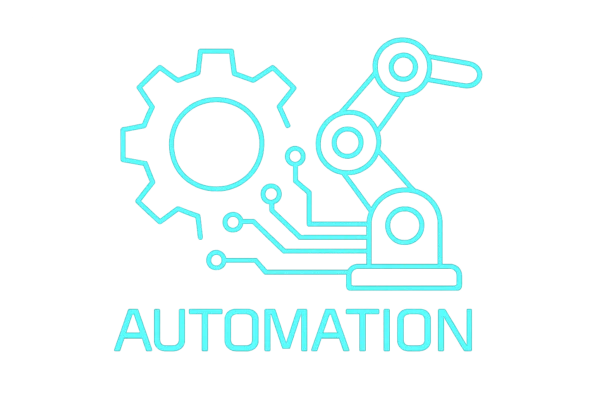
AI is revolutionizing marketing and advertising by enabling hyper-personalization, optimizing campaign performance, and automating content creation. This leads to more effective outreach, higher conversion rates, and a deeper understanding of customer preferences.
- 81. AI-driven ad targeting and personalization: AI analyzes vast datasets to identify ideal target audiences and deliver highly personalized ad content, increasing relevance and engagement.
- 82. Automated content creation for marketing campaigns: AI generates text, images, and even video content for ads, social media posts, and email campaigns, accelerating content production.
- 83. Predictive analytics for campaign performance: Forecast the likely success of marketing campaigns before launch, allowing for adjustments and optimization to maximize ROI.
- 84. Real-time bidding optimization for ad placements: AI algorithms automatically adjust bids for online ad auctions in real-time to secure optimal placements at the best price.
- 85. AI-powered social media listening and sentiment analysis: Monitor social media conversations, identify trends, and gauge public sentiment about brands, products, and competitors.
- 86. Personalized email marketing campaigns: AI tailors email content, subject lines, and send times to individual recipients, significantly improving open and click-through rates.
- 87. Chatbots for lead generation and qualification: Deploy chatbots on websites to engage visitors, answer questions, and qualify leads before passing them to sales teams.
- 88. Dynamic landing page optimization: AI continuously tests and optimizes elements on landing pages (e.g., headlines, images, calls-to-action) to improve conversion rates.
- 89. AI-driven A/B testing for marketing assets: Automate the process of testing different versions of ads, emails, or website elements to identify the most effective variations.
- 90. Customer journey mapping and optimization: AI analyzes customer interactions across all touchpoints to map out their journey and identify areas for improvement and personalization.
- 91. Automated SEO optimization: AI tools analyze search trends, competitor strategies, and website content to recommend and implement SEO improvements for higher rankings.
- 92. Influencer identification and outreach: AI identifies relevant social media influencers based on audience demographics, engagement rates, and brand alignment for marketing collaborations.
- 93. AI-powered market segmentation: Create more granular and dynamic customer segments based on complex behavioral patterns, enabling highly targeted marketing efforts.
- 94. Predictive analytics for customer lifetime value: Forecast the long-term revenue a customer is expected to generate, informing strategies for customer acquisition and retention.
- 95. Automated reporting and analytics for marketing ROI: AI compiles and analyzes marketing data to provide clear, actionable insights into campaign performance and return on investment.
- 96. Voice search optimization: Optimize website content and SEO strategies for voice search queries, adapting to the growing trend of voice-activated assistants.
- 97. AI-driven recommendation engines for content discovery: Suggest relevant articles, videos, or products to users based on their past behavior and preferences, increasing engagement.
- 98. Personalized push notifications: Deliver timely and relevant notifications to users on their mobile devices, based on their location, behavior, and preferences.
- 99. Automated campaign budget allocation: AI dynamically allocates marketing budgets across different channels and campaigns to maximize overall performance and efficiency.
- 100. AI-powered competitive advertising analysis: Monitor competitors’ advertising strategies, ad spend, and creative content to identify opportunities and stay ahead in the market.
6. Human Resources & Talent Management
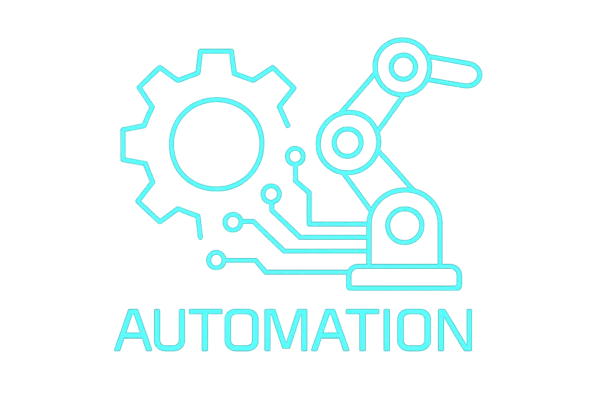
AI is transforming HR by automating routine tasks, enhancing recruitment, personalizing employee experiences, and providing data-driven insights into workforce dynamics. This leads to more efficient HR operations and a more engaged and productive workforce.
- 101. AI-powered resume screening and candidate matching: AI algorithms analyze resumes and job descriptions to identify the most suitable candidates, significantly speeding up the hiring process.
- 102. Automated interview scheduling and coordination: AI tools manage complex interview schedules, send reminders, and coordinate between candidates and hiring managers, reducing administrative burden.
- 103. Predictive analytics for employee turnover: AI identifies employees at risk of leaving the company by analyzing various data points, allowing HR to implement retention strategies proactively.
- 104. Personalized employee training and development: AI assesses individual skill gaps and learning styles to recommend tailored training programs, fostering continuous growth.
- 105. AI-driven sentiment analysis of employee feedback: Analyze employee surveys, reviews, and internal communications to gauge morale, identify concerns, and improve workplace culture.
- 106. Automated onboarding processes: Streamline the new hire experience by automating paperwork, access provisioning, and initial training, ensuring a smooth transition.
- 107. Performance management with AI-assisted insights: AI provides objective data and insights into employee performance, helping managers give more effective feedback and set goals.
- 108. AI-powered tools for workforce planning: Forecast future talent needs, identify skill gaps, and optimize staffing levels based on business objectives and market trends.
- 109. Automated payroll processing and benefits administration: AI systems handle complex payroll calculations, tax deductions, and benefits enrollment, reducing errors and ensuring compliance.
- 110. Employee engagement monitoring and improvement: AI analyzes engagement metrics and suggests interventions to boost employee satisfaction and productivity.
- 111. AI-driven diversity and inclusion initiatives: AI can help identify biases in hiring and promotion processes, promoting a more equitable and inclusive workplace.
- 112. Predictive analytics for skill gaps: Identify emerging skill requirements and anticipate future talent shortages, allowing for proactive training and recruitment.
- 113. Automated compliance checks for HR policies: AI ensures that HR practices adhere to labor laws and company policies, minimizing legal risks.
- 114. AI-assisted career pathing for employees: AI recommends potential career paths and necessary skills development based on an employee’s profile and company opportunities.
- 115. Personalized benefits recommendations: AI helps employees choose the most suitable benefits packages based on their individual needs and preferences.
- 116. Automated grievance handling: AI can triage and route employee grievances to the appropriate channels, ensuring timely and fair resolution.
- 117. AI-powered internal communication platforms: Enhance internal communication by personalizing messages, summarizing long documents, and facilitating knowledge sharing.
- 118. Predictive analytics for recruitment success: Analyze past hiring data to predict which recruitment channels and strategies are most effective for different roles.
- 119. Automated exit interview analysis: AI processes feedback from exit interviews to identify common reasons for departure, helping improve retention strategies.
- 120. AI-driven talent retention strategies: Develop and implement targeted programs to retain high-performing employees based on AI-driven insights into their needs and motivations.
7. Finance & Accounting

AI is transforming finance and accounting by automating routine tasks, enhancing fraud detection, improving forecasting accuracy, and providing deeper insights into financial performance. This leads to greater efficiency, reduced risk, and more strategic financial management.
- 121. Automated invoice processing and reconciliation: AI extracts data from invoices, matches them with purchase orders and receipts, and automates reconciliation, significantly reducing manual effort and errors.
- 122. AI-powered fraud detection in financial transactions: AI algorithms analyze transaction patterns in real-time to identify and flag suspicious activities, preventing financial losses.
- 123. Predictive analytics for financial forecasting and budgeting: AI analyzes historical financial data, market trends, and economic indicators to generate more accurate forecasts and budgets.
- 124. Automated expense reporting and auditing: AI streamlines the process of submitting, approving, and auditing expense reports, ensuring compliance and reducing processing time.
- 125. AI-driven risk assessment for investments: AI evaluates various financial instruments and market conditions to assess investment risks and recommend optimal portfolio allocations.
- 126. Personalized financial advice for clients: AI-powered platforms provide tailored financial recommendations to individual clients based on their financial goals, risk tolerance, and market conditions.
- 127. Automated compliance checks for financial regulations: AI monitors transactions and financial data to ensure adherence to complex regulatory requirements, minimizing legal and reputational risks.
- 128. AI-powered credit scoring and loan application processing: AI assesses creditworthiness more accurately and efficiently, accelerating loan approvals and reducing default rates.
- 129. Real-time financial market analysis: AI processes vast amounts of financial news, social media, and market data to provide real-time insights and trading signals.
- 130. Automated tax preparation and optimization: AI assists in gathering financial data, identifying deductions, and preparing tax returns, ensuring accuracy and compliance.
- 131. AI-driven portfolio management: AI optimizes investment portfolios based on predefined objectives, rebalancing assets and identifying opportunities for growth.
- 132. Predictive analytics for cash flow management: AI forecasts incoming and outgoing cash flows, helping businesses manage liquidity and make informed financial decisions.
- 133. Automated reconciliation of bank statements: AI matches bank transactions with internal records, automating the reconciliation process and highlighting discrepancies.
- 134. AI-assisted anomaly detection in financial data: Identify unusual patterns or deviations in financial data that could indicate errors, fraud, or emerging trends.
- 135. Optimized debt collection strategies: AI analyzes debtor profiles and payment histories to recommend the most effective collection strategies, improving recovery rates.
- 136. AI-powered audit automation: AI tools automate various aspects of financial audits, from data sampling to anomaly detection, increasing efficiency and accuracy.
- 137. Predictive analytics for stock market movements: AI analyzes historical stock data, news, and economic indicators to predict future stock price movements.
- 138. Automated financial report generation: AI compiles financial data and generates various reports, such as income statements, balance sheets, and cash flow statements, automatically.
- 139. AI-driven insights for mergers and acquisitions: AI analyzes target companies’ financial health, market position, and potential synergies to inform M&A decisions.
- 140. Enhanced financial planning with AI simulations: AI runs multiple financial scenarios and simulations to help businesses understand potential outcomes and plan for various contingencies.
8. Cybersecurity & Risk Management
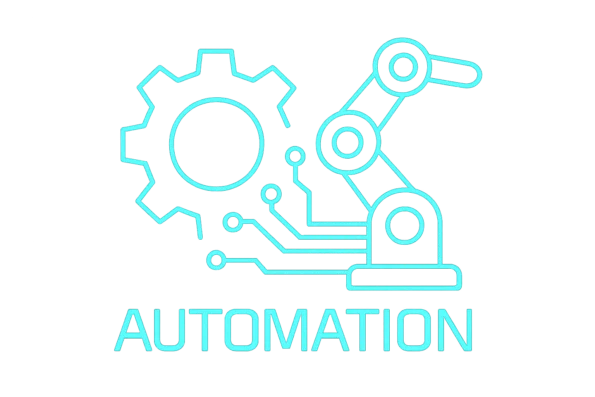
In an increasingly digital world, cybersecurity and risk management are paramount. AI provides advanced capabilities to detect threats, predict vulnerabilities, and automate responses, significantly enhancing an organization’s resilience against cyber-attacks and other risks.
- 141. AI-powered threat detection and prevention: AI systems analyze network traffic, user behavior, and system logs in real-time to identify and block sophisticated cyber threats, including zero-day attacks.
- 142. Automated vulnerability scanning and patch management: AI continuously scans systems for vulnerabilities, prioritizes them based on risk, and automates the deployment of necessary patches.
- 143. Predictive analytics for cyber-attacks: AI analyzes global threat intelligence and historical attack data to predict potential future cyber-attacks, allowing for proactive defense strategies.
- 144. AI-driven anomaly detection in network traffic: Identify unusual patterns in network behavior that could indicate a breach or malicious activity, even if the specific threat signature is unknown.
- 145. Automated incident response and remediation: AI can automatically isolate compromised systems, block malicious IPs, and initiate remediation steps, reducing the impact and duration of security incidents.
- 146. AI-powered fraud detection in financial transactions: While also relevant to finance, AI in cybersecurity specifically focuses on detecting fraudulent activities originating from cyber threats like phishing or malware.
- 147. Real-time security monitoring and alerting: AI continuously monitors IT infrastructure, applications, and data for security events, providing immediate alerts to security teams.
- 148. AI-assisted risk assessment and mitigation: AI evaluates potential risks across the organization, quantifies their impact, and recommends mitigation strategies, improving overall risk posture.
- 149. Automated compliance checks for data privacy regulations: AI ensures that data handling and security practices comply with regulations like GDPR, CCPA, and HIPAA, reducing legal and financial penalties.
- 150. User behavior analytics for insider threat detection: AI monitors employee behavior patterns to detect deviations that might indicate malicious intent or compromised accounts.
- 151. AI-driven security orchestration: AI integrates various security tools and automates workflows, creating a more cohesive and efficient security operation center.
- 152. Predictive analytics for system failures: AI analyzes system logs and performance data to predict hardware or software failures, allowing for preventive maintenance and minimizing downtime.
- 153. Automated security policy enforcement: AI ensures that security policies are consistently applied across all systems and users, preventing misconfigurations and unauthorized access.
- 154. AI-powered phishing detection and prevention: AI analyzes emails and web content to identify and block phishing attempts, protecting employees from social engineering attacks.
- 155. Enhanced physical security with AI-driven surveillance: AI-enabled cameras can detect intruders, recognize faces, and identify suspicious activities in physical locations, enhancing safety.
- 156. Automated penetration testing: AI can simulate cyber-attacks to identify vulnerabilities in systems and applications, providing continuous security assessments.
- 157. AI-driven dark web monitoring for data breaches: AI scans the dark web for mentions of company data or credentials, alerting organizations to potential data breaches.
- 158. Predictive analytics for regulatory changes: AI monitors legal and regulatory landscapes to predict upcoming changes that might impact business operations, allowing for proactive compliance.
- 159. Automated data loss prevention: AI identifies and prevents sensitive data from leaving the organization’s control, whether accidentally or maliciously.
- 160. AI-powered identity and access management: AI enhances user authentication, authorizes access based on context and risk, and detects compromised accounts, strengthening access control.
9. Supply Chain & Logistics

AI is revolutionizing supply chain and logistics management by enhancing visibility, optimizing operations, and improving resilience. From demand forecasting to last-mile delivery, AI drives efficiency, reduces costs, and ensures timely delivery of goods.
- 161. Demand forecasting and inventory optimization: AI analyzes historical sales data, market trends, and external factors to predict future demand with high accuracy, optimizing inventory levels and reducing stockouts or overstocking.
- 162. Predictive analytics for supply chain disruptions: AI monitors global events, weather patterns, and geopolitical changes to foresee potential disruptions (e.g., port closures, natural disasters), allowing businesses to reroute or adjust plans proactively.
- 163. Automated warehouse management systems: AI-powered robots and systems automate tasks like picking, packing, and sorting, increasing warehouse efficiency and accuracy.
- 164. Optimized route planning and fleet management: AI algorithms calculate the most efficient delivery routes, considering traffic, weather, and delivery windows, reducing fuel costs and delivery times.
- 165. AI-powered quality control in logistics: AI vision systems inspect goods for damage or discrepancies during transit and at various checkpoints, ensuring product integrity.
- 166. Real-time tracking and tracing of goods: AI integrates data from GPS, IoT sensors, and other sources to provide end-to-end visibility of goods in transit, enhancing transparency and accountability.
- 167. Automated supplier selection and negotiation: AI analyzes supplier performance, pricing, and reliability data to recommend optimal suppliers and assist in contract negotiations.
- 168. AI-driven risk assessment in supply chains: AI identifies potential risks (e.g., geopolitical instability, supplier bankruptcy) across the supply chain and recommends mitigation strategies.
- 169. Predictive maintenance for logistics equipment: AI monitors the health of vehicles, forklifts, and other logistics equipment to predict maintenance needs, minimizing breakdowns and operational delays.
- 170. Automated order fulfillment: AI orchestrates the entire order fulfillment process, from order receipt to dispatch, ensuring speed and accuracy.
- 171. AI-powered anomaly detection in supply chain data: Identify unusual patterns in logistics data that could indicate inefficiencies, fraud, or emerging problems.
- 172. Optimized freight consolidation: AI identifies opportunities to combine shipments, maximizing container utilization and reducing shipping costs.
- 173. Predictive analytics for delivery times: Provide accurate estimated times of arrival (ETAs) to customers by considering real-time traffic, weather, and other variables.
- 174. AI-driven sustainability in supply chains: AI identifies opportunities to reduce carbon footprint, optimize resource usage, and promote ethical sourcing throughout the supply chain.
- 175. Automated customs clearance: AI streamlines the documentation and approval process for international shipments, reducing delays and ensuring compliance with customs regulations.
- 176. Real-time capacity planning: AI helps optimize warehouse space, transportation capacity, and labor allocation based on fluctuating demand and operational constraints.
- 177. AI-assisted contract management: AI analyzes supply chain contracts to identify key clauses, ensure compliance, and flag potential risks or opportunities.
- 178. Predictive analytics for raw material prices: AI forecasts commodity prices, helping businesses make informed purchasing decisions and hedge against price volatility.
- 179. Automated reverse logistics: AI optimizes the process of returns, repairs, and recycling, improving efficiency and customer satisfaction in the reverse supply chain.
- 180. AI-powered port and terminal optimization: AI manages the flow of goods through ports and terminals, optimizing vessel docking, cargo handling, and truck scheduling to reduce congestion and turnaround times.
10. Research & Development
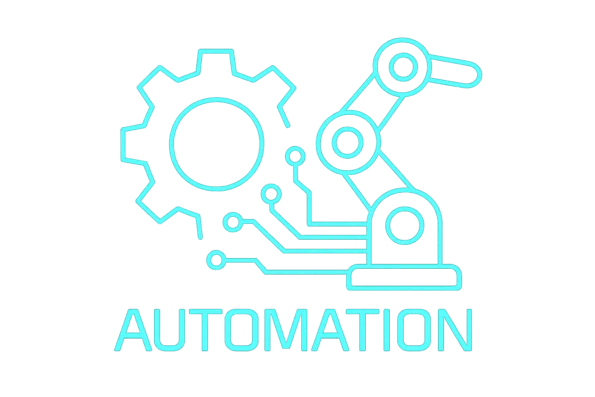
AI is a powerful catalyst for innovation in Research & Development (R&D), accelerating discovery, optimizing experimental processes, and generating new insights. By leveraging AI, businesses can shorten development cycles, reduce costs, and bring groundbreaking products and services to market faster.
- 181. AI-driven literature review and knowledge extraction: AI rapidly scans and synthesizes vast amounts of scientific literature, patents, and research papers, identifying key information, trends, and gaps.
- 182. Automated hypothesis generation and testing: AI can propose novel hypotheses based on existing data and simulate experiments to test their validity, accelerating the scientific process.
- 183. Predictive modeling for experimental outcomes: AI builds models that predict the results of experiments based on input parameters, reducing the need for costly and time-consuming physical trials.
- 184. AI-assisted data analysis in scientific research: AI processes complex experimental data, identifies patterns, and extracts meaningful insights that might be missed by human analysis.
- 185. Automated report generation for research findings: AI compiles data, visualizations, and text into comprehensive research reports, streamlining documentation and dissemination.
- 186. AI-powered simulation and modeling: AI creates sophisticated simulations of complex systems (e.g., chemical reactions, biological processes) to understand their behavior and optimize designs.
- 187. Optimized experimental design: AI recommends the most efficient experimental setups and parameters to achieve desired outcomes with fewer trials, saving resources and time.
- 188. AI-driven discovery of new materials: AI predicts the properties of hypothetical materials and guides the synthesis of novel compounds with specific characteristics for various applications.
- 189. Predictive analytics for research project success: AI analyzes project data, team dynamics, and external factors to forecast the likelihood of success for R&D initiatives.
- 190. Automated patent analysis and prior art search: AI rapidly searches patent databases and scientific publications to identify existing intellectual property, aiding in patent applications and avoiding infringement.
- 191. AI-assisted drug repurposing: AI identifies existing drugs that could be effective in treating new diseases, significantly accelerating the drug development process.
- 192. Personalized learning paths for researchers: AI recommends relevant courses, papers, and tools to researchers based on their current projects and skill gaps, fostering continuous learning.
- 193. AI-powered grant proposal writing assistance: AI can help researchers structure grant proposals, identify relevant funding opportunities, and refine their language for maximum impact.
- 194. Automated peer review assistance: AI can assist in the peer review process by identifying potential issues in research papers, such as methodological flaws or inconsistencies.
- 195. AI-driven identification of research gaps: AI analyzes existing research to pinpoint areas where further investigation is needed, guiding future R&D efforts.
- 196. Predictive analytics for scientific breakthroughs: AI can identify nascent trends and connections in scientific data that might lead to significant discoveries.
- 197. Automated data collection from sensors and instruments: AI manages and processes data streams from laboratory equipment and sensors, ensuring data integrity and accessibility.
- 198. AI-assisted collaboration platforms for researchers: AI facilitates communication, knowledge sharing, and project management among research teams, especially in distributed environments.
- 199. Optimized resource allocation for R&D projects: AI helps allocate funding, equipment, and personnel to R&D projects based on their potential impact and strategic alignment.
- 200. AI-powered intellectual property protection: AI monitors for potential infringements of intellectual property and helps in building stronger patent portfolios.
Conclusion
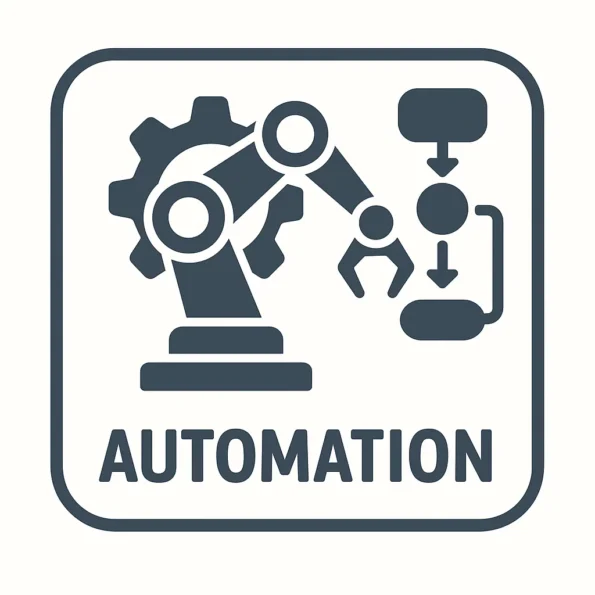
The integration of Artificial Intelligence into business operations is not merely an incremental improvement but a fundamental shift that redefines efficiency, innovation, and competitive advantage. The 200 strategies outlined in this guide demonstrate the vast and varied potential of AI to revolutionize every facet of a business, from enhancing customer interactions and streamlining internal processes to driving groundbreaking product development and fortifying cybersecurity defenses.
Embracing AI requires a strategic mindset, a willingness to invest in new technologies, and a commitment to continuous learning and adaptation. Businesses that proactively explore and implement these AI-driven approaches will be better positioned to navigate the complexities of the modern market, unlock new opportunities for growth, and build a more resilient and future-proof enterprise. The journey to an AI-powered business is ongoing, but the rewards—in terms of increased productivity, deeper insights, and superior customer experiences—are well worth the effort.

